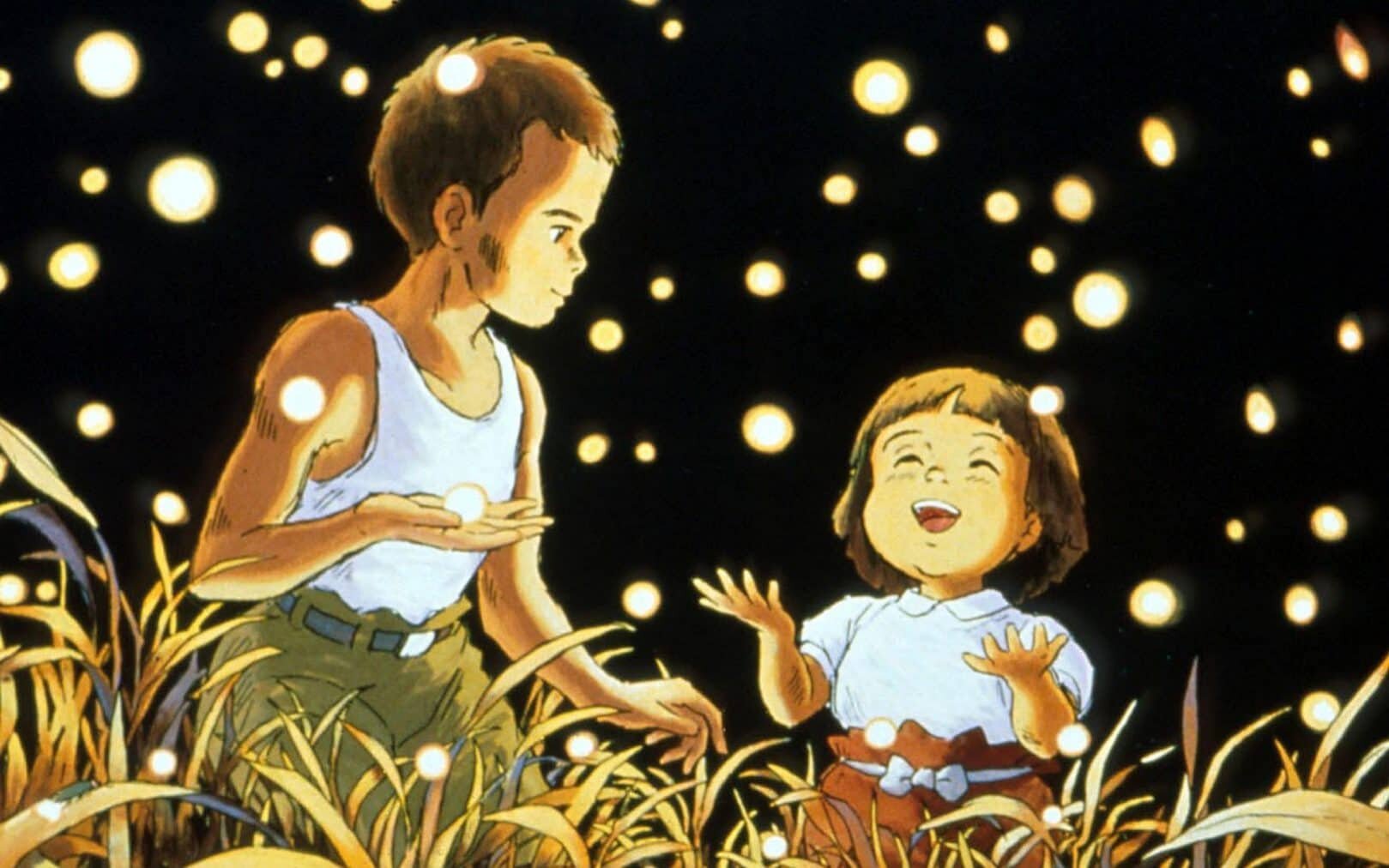A Reflection of Studio Ghibli’s ‘Grave of the Fireflies’
Studio Ghibli’s Grave of the Fireflies (1988) is not one of their most famous works, but it is notable for good reason. The film features a young boy and his little sister, attempting to survive the last few months of the Second World War in Kobe, Japan. The setting and characters reflect Japanese society during the end of World War II, and the beginning of the Cold War. Similarly, the solemn mood of the film reflects the devastation that Japan experienced with their surrender, and its immediate aftermath. Grave of the Fireflies highlights a ‘victim’s history’, and explores how the Japanese dealt with the memory of their wartime past that was fueled by nationalistic sentiment.
Prior to the outbreak of war, Japan’s nationalistic spirit had been incorporated into society. The Second World War bolstered this preexisting nationalistic fervor, which was evident among young children as well as adults. This is demonstrated by the protagonist Seita, who, throughout the film, strongly believes that his country will win the war, because this is the ideology that he, (along with the rest of society), grew up with. In one scene, someone shouts; “Long Live the Emperor”, showing the prominent Japanese view of the emperor as a higher power who can protect them. Similarly, Seita brings up his father multiple times throughout the film. His father, who worked as a naval officer, symbolises the military – the actual men on the frontline, fighting the war. Seita’s faith in his father getting revenge on the enemy for Japan, represents the faith that Japanese society had in their military. When Seita later on finds out that Japan has been defeated, he is utterly shocked – the nation that he thought so highly of, was capable of being defeated.
This nationalism also made it hard for the Japanese to come to terms with the reality of defeat, despite the country prospering since the end of the war. Japan struggled to accept their wartime history. In the opening scene, dead bodies lay forgotten around the station, with everyone walking by just brushing them aside. This demonstrates Japanese society’s desire to disregard their wartime history and simply return to their normal lives, which war had interrupted. As such, Grave of the Fireflies is an attempt from the director Takahata Isao, and Nosaka Akiyuki, (whose autobiography the film is based on), to confront Japan’s past.
Grave of the Fireflies emphasizes the ‘victim’s history’ by appealing to pathos, (emotional appeal), especially through the use of children as the main characters. Children are innocent and hence represent the Japanese victims, who were mostly civilians caught in the war, even though it was the government and military fighting. The bombings and tragedies portrayed are reminiscent of the immense extent of suffering Japanese civilians experienced as victims of the war. Seita and his younger sister Setsuko were helpless and hopeless throughout the film, unable to survive under the harsh conditions of war with no food and no one to rely on. The fireflies also symbolize how fleeting life is, as portrayed by how quickly Seita and Setsuko died after the war.
Grave of the Fireflies joins a long list of films that tell the ‘victim’s history’ in an animated format. Since the latter half of the 20th century, anime has been at the forefront of Japan’s popular culture and has touched the hearts of millions around the world. Anime’s ability to tell worthwhile stories using beautiful art styles and animation, as well as superb characterization and stellar voice acting, has captivated mass audiences of diverse backgrounds. Voice actors pour their heart and soul into their jobs, providing characters with voices full of raw emotion, and as a result, audiences often find themselves empathizing with these animated characters.
Oftentimes, movies focused on ‘victim’s history’ provide an alternative view and perspective to mainstream history, one that we might not have considered otherwise. It can certainly provide a more holistic view of a certain event or time period. These kinds of movies can move beyond being pure entertainment, allowing audiences to reflect on larger historical issues. Grave of the Fireflies has unquestionably left its impact on modern Japanese cinema. Ultimately, anyone who watches it will undoubtedly be moved by the characters, and potentially consider a different historical narrative.
